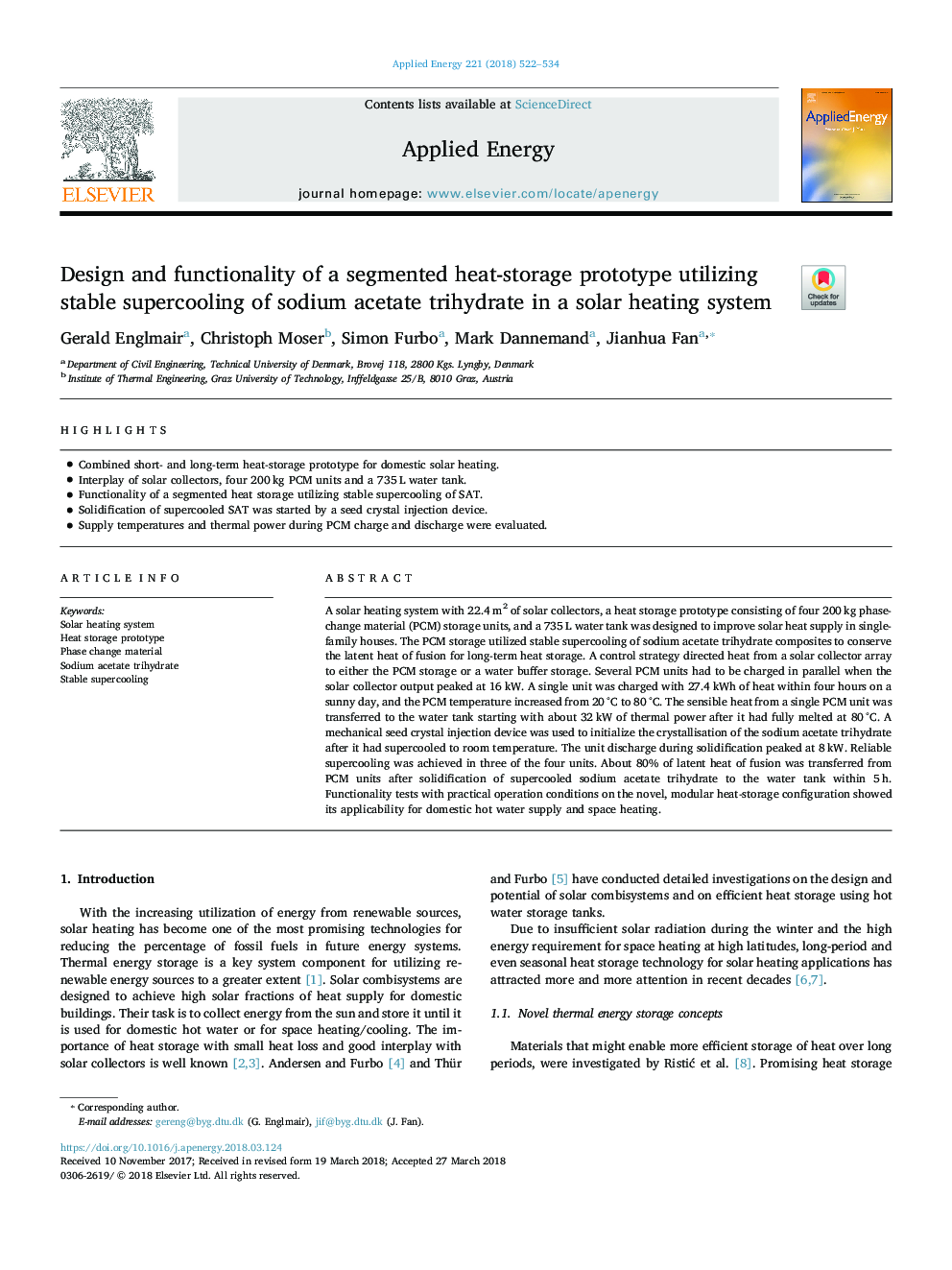| Article ID | Journal | Published Year | Pages | File Type |
|---|---|---|---|---|
| 6680160 | Applied Energy | 2018 | 13 Pages |
Abstract
A solar heating system with 22.4â¯m2 of solar collectors, a heat storage prototype consisting of four 200â¯kg phase-change material (PCM) storage units, and a 735â¯L water tank was designed to improve solar heat supply in single-family houses. The PCM storage utilized stable supercooling of sodium acetate trihydrate composites to conserve the latent heat of fusion for long-term heat storage. A control strategy directed heat from a solar collector array to either the PCM storage or a water buffer storage. Several PCM units had to be charged in parallel when the solar collector output peaked at 16â¯kW. A single unit was charged with 27.4â¯kWh of heat within four hours on a sunny day, and the PCM temperature increased from 20â¯Â°C to 80â¯Â°C. The sensible heat from a single PCM unit was transferred to the water tank starting with about 32â¯kW of thermal power after it had fully melted at 80â¯Â°C. A mechanical seed crystal injection device was used to initialize the crystallisation of the sodium acetate trihydrate after it had supercooled to room temperature. The unit discharge during solidification peaked at 8â¯kW. Reliable supercooling was achieved in three of the four units. About 80% of latent heat of fusion was transferred from PCM units after solidification of supercooled sodium acetate trihydrate to the water tank within 5â¯h. Functionality tests with practical operation conditions on the novel, modular heat-storage configuration showed its applicability for domestic hot water supply and space heating.
Related Topics
Physical Sciences and Engineering
Energy
Energy Engineering and Power Technology
Authors
Gerald Englmair, Christoph Moser, Simon Furbo, Mark Dannemand, Jianhua Fan,
